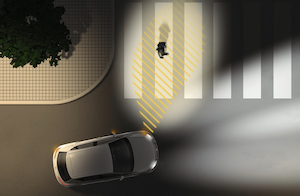They are typically located near the front fenders of a car, and may also be found in the rear. These lights typically integrate with the front side marker or indicator lights and illuminate when the turn signal is activated, making them easy to use. Corner lights are usually equipped with halogen or light-emitting diode (LED) bulbs, but this can vary depending on the make and model of the vehicle.
It's easy to confuse a corner light with a side marker light, as both are found on the sides of a vehicle and can look similar. However, side marker lights are intended to help other drivers see the position and direction of your car, while corner lights provide additional lighting in low visibility situations. Side marker lights typically illuminate with the vehicle's headlights or blink with the directionals, and are typically located near the bumper, fender or rear quarter panel.
Not all cars are equipped with corner lights, as they are not a legal requirement. This feature was first introduced by Cadillac in 1962, and later adopted by other General Motors vehicles. Some foreign car brands, such as Volvo and Saab, also have corner lights as a safety feature.
In recent years, automotive lighting technology has advanced to include more advanced options such as steerable or adaptive headlights. These types of headlights allow the beam of light to bend when making turns, using electronic sensors to detect the speed of the car and the angle of the steering wheel.
Dynamic corner lights can rotate with the steering wheel to improve visibility when making turns, and Adaptive Front-Lighting Systems (AFS) use data from the car's surroundings and adjust the light beams accordingly.
Though corner lights may not be a legal requirement, they can greatly improve visibility and safety while driving. As technology continues to evolve, it's important to appreciate the simple yet effective technologies that have been implemented to enhance our driving experience.
